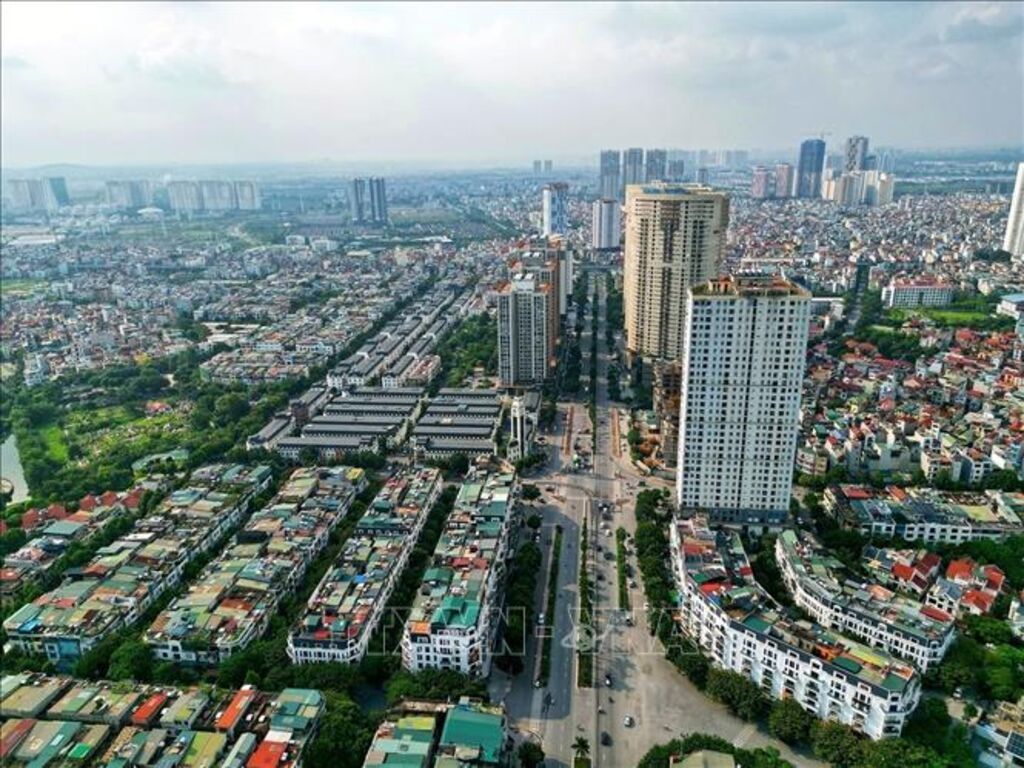 |
| A bird's-eye view of Van Phu urban area, Kien Hung ward, Hanoi__Photo: VNA |
The Ministry of Construction (MOC) is currently seeking public opinions on a draft Resolution of the National Assembly Standing Committee that would reshape the way urban areas are classified, in line with the two-tier local administration system.
Under the draft, urban areas would continue to be divided into six categories: special, class I, class II, class III, class IV, and class V. The classification would be based on three groups of criteria: the role, position, and conditions for socio-economic development; the degree of urbanization; and the level of infrastructure development and spatial planning, of urban areas.
These criteria are broken down into specific standards applicable to each urban category, reflecting the practical development, unique functions of different localities, and the need for high-quality, smart, interconnected, efficient and sustainable cities.
Local administration would be required to use classification results as a basis for planning work. This work covers reviewing and updating provincial and municipal urban development programs, preparing plans for wards and communes slated to become wards, and phasing investment in technical and social infrastructure as well as urban architecture and landscapes. The draft also allows flexible adjustments to standards to suit regional and local characteristics.
The draft also provides for the decentralization of powers in the recognition of urban classification results. The MOC would retain the authority to approve urban areas of class I and class II, as well as special zones that meet the criteria of class II. Meanwhile, chairpersons of provincial-level People’s Committees would be empowered to recognize urban areas of class III, class IV and class V, as well as wards and localities that meet the standards of class III and IV, and special zones qualifying as class III.
Digital transformation is another key feature of the draft. Local administrations would be tasked with building and updating comprehensive urban databases based on principles of accuracy, completeness, transparency and shared use. They would have to work out roadmaps for digital transformation in order to monitor, evaluate and disclose criteria and standards for urban classification.
The Government would carry out the digital transformation in the process of urban classification in conjunction with scientific and technological development, innovation, and digital transformation activities. The State would prioritize budget allocations and mobilize lawful resources to accelerate the digital transformation in this field.- (VLLF)









